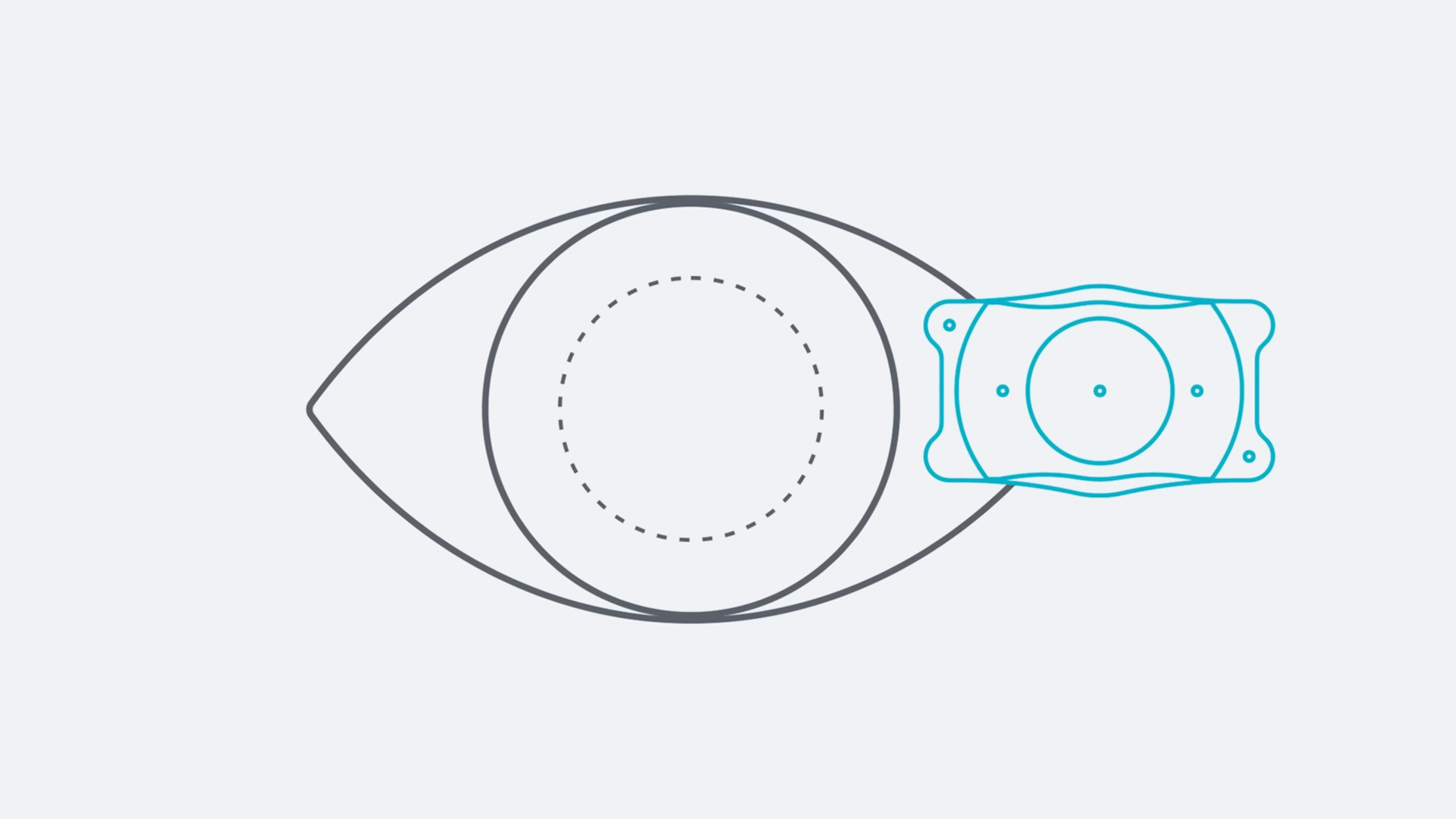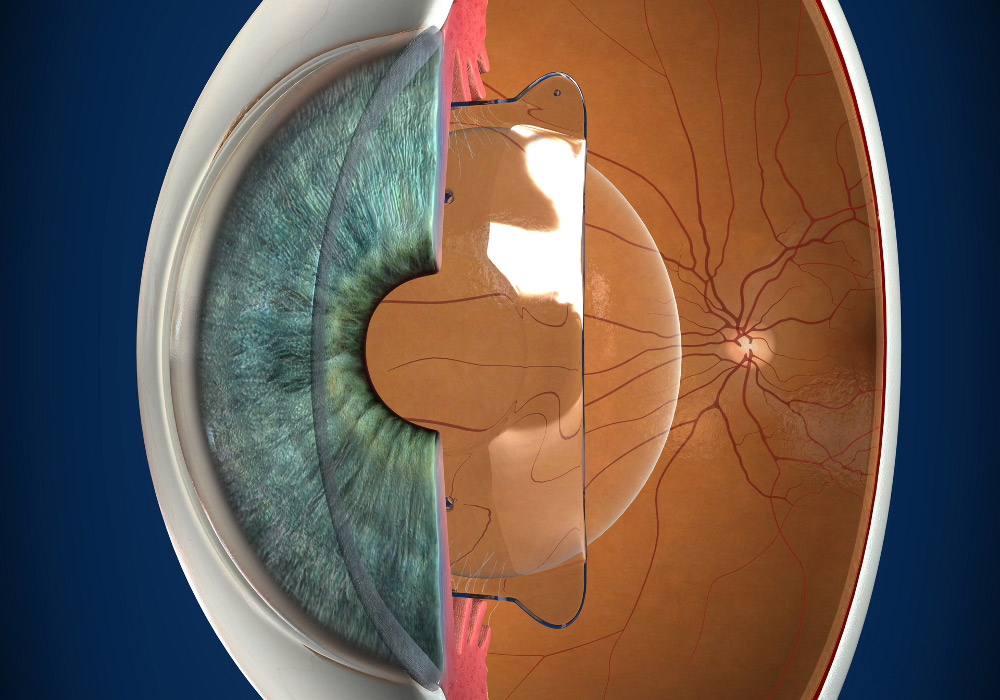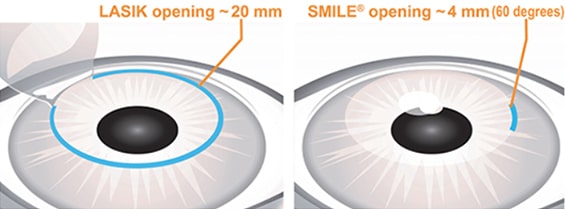An ICL (Implantable Collamer Lens) can be an alternative to LASIK laser eye surgery. Start your new life with a safe and reversible procedure.
Implantable collamer lenses can help you start living your life
Start seeing without glasses
ICL can be used to treat severe myopia and astigmatism. It is suitable for people between the ages of 20-45.
Unlike SMILE or LASIK procedures, the Implantable Collamer Lens (ICL) that is implanted in your eye can be removed in the future.
The implantation of the ICL is painless. As soon as they are implanted, you will see clearly and not feel the lens.
Depending on the type of ICL inserted into the eye, you will be able to see clearly within 24 hours. Your natural lens will not be removed.

Known as an implantable collamer lens (ICL), these lenses are designed to be implanted inside the eye. It is like having your contact lens inside your eye. The lens is designed for your type of eye correction and is inserted inside your eye. The good thing is that your natural lens will remain in place with ICLs. The lens can also be removed if you no longer want it.
Types of Implantable Collamer Lens (ICLs)
With the Toric ICL, myopia and astigmatism can be corrected at the same time, eliminating the need for two separate procedures to correct them. Toric ICL has been available internationally for over a decade. Ninety-eight percent reported improved vision that matched or exceeded their expectations.
In the STAAR implant, collagen copolymers are used as the material. As collagen is a natural part of our bodies, it is not regarded as a foreign substance by the eye. When implanted, it won’t feel or require any maintenance, unlike regular contact lenses. Ninety-five percent of patients who undergo ICL implantation are satisfied with the results.
ICLs are artificial lenses designed to correct refractive errors inside the eye. Astigmatism and myopia are all caused by errors in the shape of the eye.
If you are not a candidate for LASIK or SMILE eye surgery or you do not want this type of surgery, then ICLs are a perfect solution. They are safe, reversible, and can give you the vision you had when wearing glasses. They are like contact lenses in your eyes.
The implantable collamer lens (ICL) does not replace the natural lens of the eye. The lens is made of a collagen co-polymer containing a small amount of purified collagen called Collamer. Flexible ICLs can be rolled for insertion behind your pupil through a very small incision, which eliminates the need for stitches. It can be removed and upgraded at any time.
Schedule a free consultation with our doctor to guide you on the appropriate treatment options available.


Types of Eye Prescriptions for ICL
If you have severe myopia or astigmatism then you may benefit from ICL surgery.
The lenses are safe, reversible, and can give you the vision you had when wearing glasses. This procedure does not involve the removal of the natural lens of the eye and is completely reversible, while LASIK and SMILE change the natural lens of the eye.
These lenses are implanted between the cornea and crystalline lens, without having to remove the eye lens; therefore, they are typically indicated for younger patients (between 20-45 of age).
ICL lenses are capable of correcting very high levels of myopia (up to 20 diopters) with few restrictions on the patient. It is not recommended for patients with less than three dioptres of correction.
The chosen ICL lens can correct astigmatism as small as 1.00 D up to as large as 4.00 D in the toric version. In contrast to LASIK and PRK, ICL does not require a minimum corneal thickness. ICL remains an option even if your cornea is too thin for laser surgery.
How does it compare to LASIK or SMILE?
National Eye Institute guidelines recommend the use of LASIK (laser-assisted in situ keratomileusis) SMILE and implantable collamer lenses (ICLs) for treating different types of refractive errors. ICLs can replace the LASIK or SMILE procedures for higher refractive errors.
The ICL is used for refractive lens surgery, which is a type of vision correction surgery. There is no need to remove corneal tissue during this procedure. Your vision is corrected by placing a lens inside the eye. Approximately 20 to 30 minutes are required per eye for this procedure. Usually, the two eyes are operated on about a week apart.

It is the thickness of the cornea that makes LASIK or SMILE incompatible with a substantial number of patients who require a correction greater than six diopters.
ICLs, on the other hand, are capable of correcting myopia at very high levels without relying on the thickness of the cornea.
Are you ready to join the 16,000 happy patients who can now see clearly without glasses or contact lenses? Get a free consultation and see whether you can get an ICL for your type of eye prescription.
At the North American LASIK and Eye Surgery Centre, we perform weekly eye surgeries and we have done over 16,000 surgeries since we first opened our clinic in 2013. You can see some of our client testimonies here.
Our founder, Dr. Abdulla Naqi, and the team of surgeons have over 30 years of experience and have done over 16,000 eye surgeries. Our commitment to all our patients is that they receive treatment in terms of quality, trustworthiness, and credibility. The North American Lasik and Eye Surgery Centre is accredited by the Emirates International Accreditation Center (EIAC).

Frequently Asked Questions
The procedure takes approximately 30 minutes per eye. Normally the surgery is done with 1 eye at a time, spaced 1-2 weeks apart. There is no removal of corneal tissue during the ICL procedure. An incision of 3mm will be made at the base of your cornea to fold and insert the ICL. During insertion behind the iris, the doctor will adjust the ICL so that it is placed properly within the eye to provide optimal vision correction.
An important characteristic of this lens is that it is made of a material called Collamer, which contains a small amount of purified collagen. As a result of its stability and biocompatibility, the lens is highly safe, soft, flexible, and moist. A microscopic incision with no stitches allows the ICL to be implanted without altering corneal shape or health.
There is a quick recovery after ICL. After surgery, 70% to 80% of patients have restored their vision and even feel comfortable driving. Within a week your vision will have stabilized and should have clear vision.
For patients with dry eyes who cannot benefit from laser vision correction, ICL is the best option. Most patients with ICL surgery don’t experience dry eyes since the procedure does not change the shape of the cornea.
Before surgery anesthesia is applied to the eye. This helps reduce any discomfort during the procedure. Normally the procedure lasts about 30 minutes per eye and right away you should see a positive difference in your eyesight.
Although the procedure can be reversed, ICLs never need to be replaced because unlike eye lenses, they cannot age or get cloudy over time. The only time they may need to be replaced is if your eye prescription changes.
It can be normal to experience slight itchiness or a feeling of tired eyes on the day of the procedure. The eyes are kept comfortable post-procedure by a surgeon-guided regimen of medicated drops and artificial tears.
Post-procedure, rest for 24 hours, and stay inside on the day of the ICL insertion. After that, keep your eyes covered with sunglasses when outside to let them heal.
You should never rub your eyes. Rubbing your eyes can have harmful side effects– especially directly after a laser vision correction procedure. If you experience itchy or dry eyes use your recommended lubricating drops.
